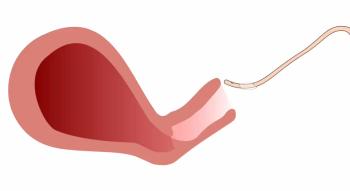Over the past several years, there has been an increase in the focus on, if not priority of, patient safety. Hospitals now promote a mantra of a culture of safety, employ safety officers, and have organized patient safety committees. In fact, in 2007 a dedicated open-access journal titled Patient Safety in Surgery was created, and it reached an impact factor of 3.7 in 2022, further emphasizing the clinical community’s current mission to promote patient safety.1 This shift is also now leading the development of surgical innovation for pelvic organ prolapse (POP). Surgical approaches are being improved by becoming less invasive and less morbid, with a faster return to normal activities. This transition has already taken place for stress urinary incontinence. Today’s graduating residents and fellows rarely ever see a Burch procedure because it is seldom performed. Yet prior to 1998 and the advent of midurethral slings, it was the first-line surgical treatment option for stress urinary incontinence. In 2002, Karen Ward and Paul Hilton established a midurethral pubovaginal sling to be superior to the Burch procedure, not because of improved efficacy but rather because of lower morbidity, faster return to normal activity, and lower cost.2 A similar evolution is currently happening in surgical innovation for POP. Unfortunately, since transvaginal mesh, there have been no truly novel therapies in the surgical treatment of POP. There have been, however, several new products designed to improve patient safety through reducing adverse events and even improving efficiency in the operating room. This article will review 3 recent innovations in surgical treatment of POP that offer opportunities to reduce adverse events commonly associated with traditional reconstructive pelvic surgery.
Takeaways
- The ultimate goal of patient safety in surgery is eliminating preventable adverse events and improving patient outcomes on a larger scale.
- Recent innovations in surgical devices for pelvic organ prolapse have centered on enhancing patient safety.
- Sacrospinous hysteropexy compared with vaginal hysterectomy combined with uterosacral ligament suspension has been shown to have fewer anatomical recurrences of the apical compartment and thus should be considered as a viable surgical treatment option.
- Recent novel devices allow a transvaginal percutaneous approach to hysteropexy, which can offer a significant reduction in intraoperative adverse events typically associated with traditional dissection techniques.
- Safeguards should be taken to reduce the risk of a lost needle during robotic sacral colpopexy, as it can lead to a serious adverse event.
POP
POP is a distressing condition affecting millions of women. It is defined as downward descent of the female bladder, uterus, rectum, or posthysterectomy vaginal vault, resulting in protrusion into or bulge within the vagina. Bothersome symptoms are feelings of pressurelike discomfort or bulging, most commonly with prolonged standing or activity. There can also be associated lower urinary tract symptoms such as urinary frequency and voiding dysfunction, often leading to the sense of incomplete bladder emptying. Less commonly, there can be associated rectal symptoms such as defecation dysfunction and fecal incontinence. With the aging of the US female population, the individual burden of POP is steadily rising. Approximately 11% to 20% of women will experience symptomatic POP. A recent study predicted that the total number of women who will undergo surgery for POP disorders will increase by 48.1% by 2050 because of the aging population.3 POP is a quality-of-life condition and does not necessarily affect mortality, but it can contribute to morbidity in terms of significant discomfort and lower urinary tract symptoms including bacterial cystitis. The impact of POP in each patient is very individualized. Depending on its severity, POP can have a profound effect on a woman’s physical, emotional, and social well-being.
Management options
Conservative management options for prolapse include pelvic floor muscle strengthening and topical estrogen use for mild symptoms. More moderate and severe cases are most often managed with the use of a pessary or reconstructive pelvic surgery. Presently, there are about 300,000 surgeries performed each year in the United States for the treatment of POP.4 There are 2 main approaches to prolapse surgery: abdominal and vaginal. Compared with a vaginal approach, abdominal approaches such as the abdominal sacral colpopexy (ASC), even when
performed robotically, tend to be longer surgeries, requiring general anesthesia with higher morbidity and even, rarely, mortality. Vaginal hysterectomy, however, remains the most common procedure performed globally for the treatment of POP. Historically, hysterectomy has been included within the standard of care for surgical treatment of POP. While hysterectomy effectively treats uterine prolapse, it may also lead to postoperative complications such as vaginal vault prolapse, which may necessitate additional surgeries. Recent advancements in surgical techniques, however, have sparked a growing interest in alternative approaches such as hysteropexy. Preserving the uterus during reconstructive pelvic surgery affords the opportunity to lower the morbidity commonly associated with removal of the uterus. This includes but is not limited to bleeding, injury, and infection. Moreover, the psychosocial impact of hysterectomy, which can lead to concerns about body image and self-esteem, cannot be underestimated. In recent years, there has been a paradigm shift in the management of POP toward more conservative and uterus-preserving options, with hysteropexy emerging as a promising alternative. Hysteropexy involves the repositioning and suspension of the uterus using various surgical techniques and materials while leaving it intact. Hysteropexy is generally considered less invasive, leading to reduced surgical risks and shorter recovery times. Assessing the safety of these procedures also requires an examination of their long-term outcomes. Hysteropexy, by preserving the uterus and supporting pelvic structures, may offer more stable long-term outcomes and reduce the risk of POP recurrence.
Vaginal reconstructive surgeries not involving a hysterectomy are often performed under regional anesthesia or intravenous (IV) sedation, and many remain extraperitoneal, decreasing morbidity and mortality. The use of IV sedation instead of general anesthesia also improves the safety profile of the procedure and is very appealing to elderly patients. In comparing hysteropexy with hysterectomy, the former is considerably safer. Hysteropexies remain extraperitoneal, involve minimal dissection, and do not require ligation of any vasculature. Vaginal hysterectomies have much higher rates of bleeding, given the need to securely ligate the uterine arteries, and longer operative times. Uterosacral vault suspension is most often performed in conjunction with a vaginal hysterectomy, requiring entry into the peritoneal cavity. In addition, there is an approximate 11% risk of ureteral kinking, entrapment, and/or transection during a total vaginal hysterectomy and uterosacral ligament fixation.5
Traditionally, hysteropexy has been performed with a traditional dissection technique. Recent innovation, however, has led to further reduction in adverse events typically associated with this approach by allowing a transvaginal percutaneous hysteropexy.
Novel devices
Transvaginal percutaneous hysteropexy can be performed under IV sedation and local anesthetic as an outpatient procedure. The EnPlace (formerly NeuGuide) system is a single-use device designed to allow transvaginal percutaneous hysteropexy with bilateral anchor-based permanent suture suspension of the cervix to the sacrospinous ligaments (Figure 1). The surgery is performed utilizing palpation guidance through the vaginal wall apex near the lateral cervicovaginal junction, thereby avoiding the morbidity and risks associated with traditional vaginal dissection to gain exposure to the sacrospinous ligaments. In 2016, Tsivian et al first described the use of this device utilizing a dedicated combined anchor-suture transvaginal percutaneous delivery system to perform a bilateral hysteropexy to the sacrospinous ligaments. This 2016 study indicated the system was feasible, as all steps of the procedure had been conducted successfully with percutaneous anchor deployment and suture securement to the sacrospinous ligaments in 3 female cadavers, for a total of 14 anchors.6 In 2017, Weintraub et al evaluated the safety and short-term outcome of this same procedure in a pilot study of 10 women with a diagnosis of POP-Q stage III. The preliminary results revealed no patients had experienced recurrent prolapse at the 6-month follow-up and, most importantly, there were no intraoperative complications. Overall, patients reported a high global satisfaction with improved quality-of life-scores.7 In 2022, Ben Zvi et al published a single-center longitudinal prospective study of 15 women with advanced POP who underwent apical repair using EnPlace with at least 4 years of follow-up.8 This study once again demonstrated the EnPlace procedure to be both safe and effective for transvaginal percutaneous sacrospinous ligament hysteropexy. All these previous studies demonstrated that the procedure has a significantly low rate of serious adverse events, with no reported hemorrhage requiring transfusion, bladder or rectal injuries, or surgical site infections. In addition, a transverse defect repair can easily be performed in conjunction with the EnPlace procedure to address anterior vaginal wall elongation associated with cystocele formation.
The Escala device likewise offers a minimally invasive vaginal approach to prolapse that also utilizes a transvaginal percutaneous methodology to fix the vaginal cuff to the sacrospinous ligament (Figure 2). The procedure is performed using a handpiece that is lightweight and shaped like a bipolar energy device. The handpiece delivers a nitinol 4-pronged anchor into the sacrospinous ligament that is attached to absorbable sutures of the surgeon’s choice. There is an optional securement element in the form of a stainless-steel button that slides over the sutures down to the vaginal mucosa to secure the vaginal apex in place. In addition, there is an optional retriever to facilitate anchor removal if suboptimal placement is suspected. This procedure is currently being performed in the outpatient setting under local anesthesia.
Minimally invasive approaches to transabdominal reconstructive pelvic surgery have led to a decrease in operative morbidity with an improvement in overall patient safety. These procedures are now more often performed robotically or laparoscopically, decreasing the overall morbidity associated with traditional open ASC. The transition to laparoscopic ASC has brought the unique challenge of suture and needle management within a relatively limited operative field, especially in robotic cases. Robotic surgeons typically rely on their surgical assistants who are scrubbed in at the patient’s bedside to pass sutures into the surgical field and retrieve the used needles. These needle and suture transfers can be inefficient and even dangerous. It is not uncommon for a bedside assistant to drop or otherwise lose a needle inside the surgical field when attempting to remove it through a trocar. The incidence of reported lost or retained instruments following laparoscopic surgery is between 0.06% and 0.11%.9 However, this range undoubtedly represents a gross underestimate, since it does not reflect cases in which needles are temporarily lost but later safely retrieved. The process of finding a lost needle is very stressful, time-consuming, and expensive. In some cases, a lost needle can lead to an otherwise unnecessary laparotomy for retrieval.
StitchKit (Origami Surgical), is a self-contained suture and needle management system used during robotic surgery (Figure 3). StitchKit is designed to enhance safety, autonomy, and efficiency by allowing the surgeon to fully manage suture use and needle disposal within the surgical field while seated at the robotic console. The device, which opens like a clamshell within the surgical field, comes loaded with all the sutures required to complete the given robotic surgery on one side and a sharps container for disposal of used needles on the other side. Beyond simply eliminating the issue of lost needles, use of StitchKit provides efficiencies that can result in significantly shorter operative times.
Conclusion
The era of transvaginal mesh undoubtedly created a reset surrounding patient safety and the priority of reducing adverse events associated with minimally invasive approaches to reconstructive pelvic surgery for symptomatic POP. The novel devices reviewed in this article create the opportunity to further reduce the commonly associated risks of traditional surgery for POP, namely bleeding, injury, and surgical site infections. They also offer enhanced operating room efficiencies, lower cost, and a faster return to normal activity. Although long-term studies will need to be completed to evaluate their durability and risk of future failure, they should be considered during counseling of patients who are considering surgical intervention for POP and seeking knowledge of all available treatment options so they can make a truly informed decision.
References
- Stahel PF, Weckbach S, Ziran N, et al. Patient Safety in Surgery - announcing the journal’s first impact factor (3.7). Patient Saf Surg. 2023;17(1):22. doi:10.1186/s13037-023-00375-8
- Ward K, Hilton P; United Kingdom and Ireland Tension-Free Vaginal Tape Trial Group. Prospective multicentre randomised trial of tension-free vaginal tape and colposuspension as primary treatment for stress incontinence. BMJ. 2002;325(7355):67. doi:10.1136/bmj.325.7355.67
- American College of Obstetricians and Gynecologists, American Urogynecologic Society. Pelvic organ prolapse. Female Pelvic Med Reconstr Surg. 2019;25(6):397-408. doi:10.1097/SPV.0000000000000794
- Jelovsek JE, Maher C, Barber MD. Pelvic organ prolapse. Lancet. 2007;369(9566):1027-1038. doi:10.1016/S0140-6736(07)60462-0
- Barber MD, Visco AG, Weidner AC, Amundsen CL, Bump RC. Bilateral uterosacral ligament vaginal vault suspension with site-specific endopelvic fascia defect repair for treatment of pelvic organ prolapse. Am J Obstet Gynecol. 2000;183(6):1402-1410; discussion 1410-1411. doi:10.1067/mob.2000.111298
- Tsivian M, Weintraub AY, Neuman M, Tsivian A. Introducing a true minimally invasive meshless and dissectionless anchoring system for pelvic organ prolapse repair. Int Urogynecol J. 2016;27(4):601-606. doi:10.1007/s00192-015-2875-6
- Weintraub AY, Ben Zvi M, Yohay D, et al. Safety and short term outcomes of a new truly minimally invasive mesh-less and dissection-less anchoring system for pelvic organ prolapse apical repair. Int Braz J Urol. 2017;43(3):533-539. doi:10.1590/S1677-5538.IBJU.2016.0356
- Ben Zvi M, Weintraub AY, Friedman T, Neuman M, Tsivian A. Minimally invasive meshless and minimal dissection ligament fixation system for apical organ prolapse procedures: a 4-year prospective follow up study. Int J Gynaecol Obstet. 2022;158(3):657-662. doi:10.1002/ijgo.14046
- Jayadevan R, Stensland K, Small A, Hall S, Palese M. A protocol to recover needles lost during minimally invasive surgery. JSLS. 2014;18(4):e2014.00165. doi:10.4293/JSLS.2014.00165
















